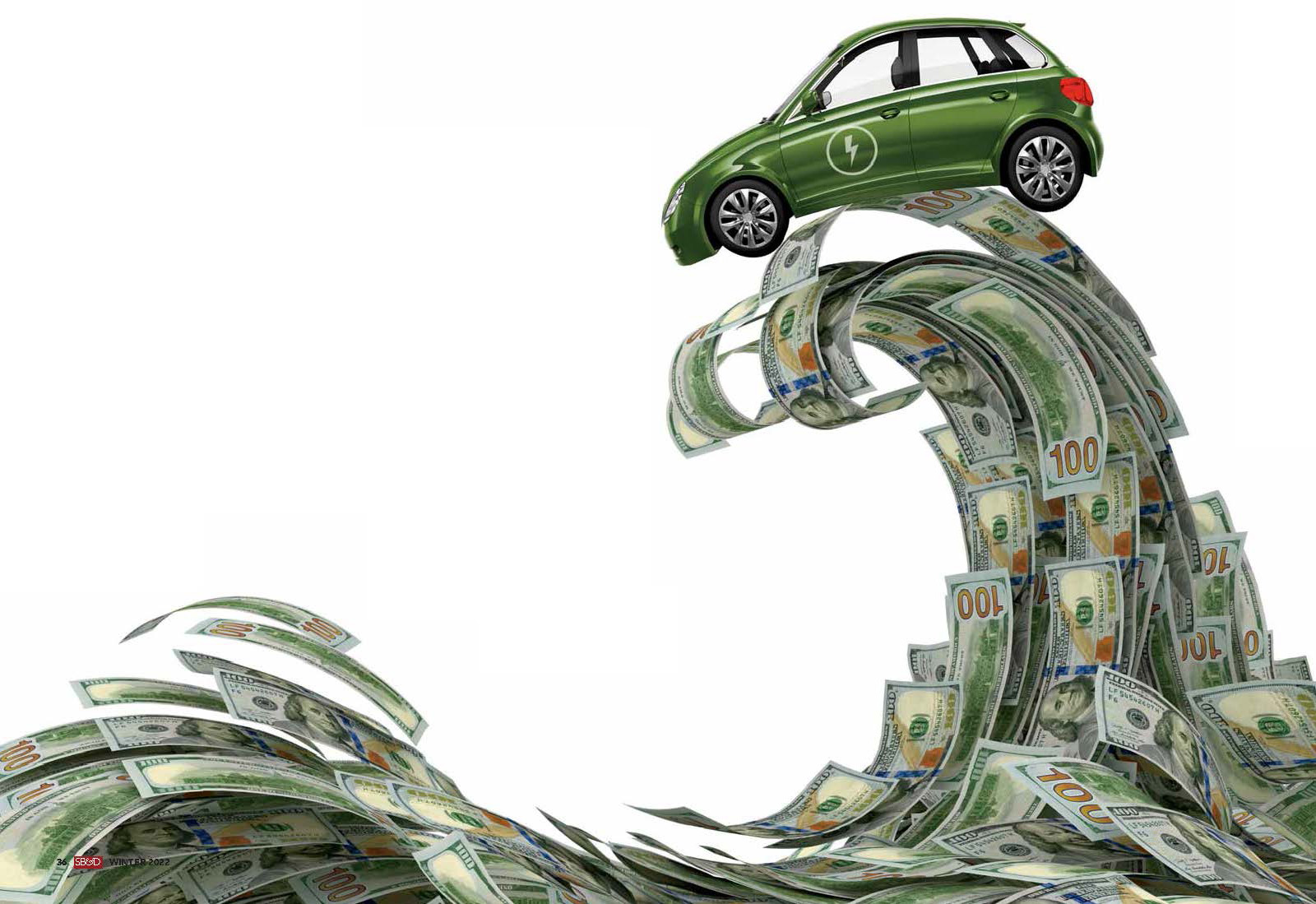
Southern Business & Development has covered economic development in the 15 Southern states continuously for 30 years now. It has been interesting in those three decades to observe economic trends in the South, the third largest economy in the world behind only the United States and China based on GDP.
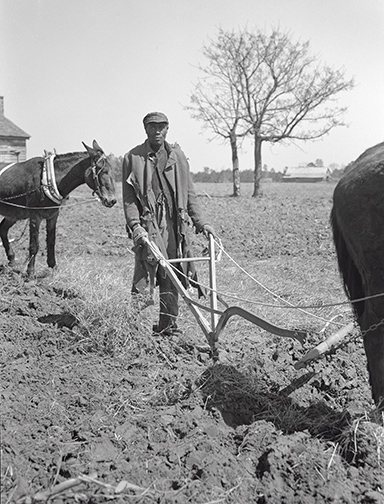 From the backwater days of low wages derived from sharecroppers post-Civil War to the basic industries captured post-World War II, the American South has positively transformed itself from a place that was dirt poor 150 years ago into the premiere North American address for hordes of domestic and foreign-owned corporations. In just three or four generations, the South has molded its economy into the economic engine of the United States and the world, and SB&D has been there to document it. To give a personal account of how far the South has come in just my lifetime, check this out. Much of my father and mother’s family came from Atlanta, Buckhead and Brookhaven to be specific. Before the I-285 perimeter was completed in Atlanta (it is still a perimeter, but is considered “in town” today), my uncle would drive me north to places like Sandy Springs (which is now a corporate headquarter magnet) to visit his friends. Prior to reaching Sandy Springs from Buckhead, you would see cows in pastures, right there on Roswell Road. If you know that part of Atlanta, unreal, right? This would have been in the mid-1960s.
From the backwater days of low wages derived from sharecroppers post-Civil War to the basic industries captured post-World War II, the American South has positively transformed itself from a place that was dirt poor 150 years ago into the premiere North American address for hordes of domestic and foreign-owned corporations. In just three or four generations, the South has molded its economy into the economic engine of the United States and the world, and SB&D has been there to document it. To give a personal account of how far the South has come in just my lifetime, check this out. Much of my father and mother’s family came from Atlanta, Buckhead and Brookhaven to be specific. Before the I-285 perimeter was completed in Atlanta (it is still a perimeter, but is considered “in town” today), my uncle would drive me north to places like Sandy Springs (which is now a corporate headquarter magnet) to visit his friends. Prior to reaching Sandy Springs from Buckhead, you would see cows in pastures, right there on Roswell Road. If you know that part of Atlanta, unreal, right? This would have been in the mid-1960s.
Same is true of Orlando. Playing baseball for the University of Tampa in the mid-1970s, we would drive to Orlando to play other teams such as Rollins and Stetson. In the shadow of the small handful of high-rises in downtown Orlando at the time, was a meadow populated by many Brahman bulls.
So, the growth of the South is a phenomenon that was sudden, taking just a few decades to dominate the world’s largest economy. It grew into the third largest economy in the world in one lifetime, when just 75 or so years ago the region’s per capita income was 50 percent of the national average. The South was broke then. It’s much better off now, but the region still remains the poorest of all other U.S. regions. Much of that is because it is the most populated region by a wide margin.
A new massive economic trend emerges that is almost completely “Southern”
Today, something is happening with the South’s economy that is really not happening anywhere else in the world. Based on investments, the South — or what we call the Southern Automotive Corridor (southernautocorridor.com) — is capturing nearly all of the next-generation electric vehicle and battery manufacturing plants. There are thousands of jobs and billions in investment coming from domestic automakers based in the Midwest as well as German, Japanese and Korean automakers.
So far, reporting on this has been limited, except for this publication and a New York Times article published March 16, 2022, titled, “Mercedes opens a battery plant in Alabama, part of a Southern wave.” This is a big deal. As big as any manufacturing trend ever in the United States.
Economic trends over the years in the South are a mixed bag for most industries, but not for automotive
We recall perfectly when the region’s base manufacturing sectors for six or seven decades — textiles, furniture and apparel — dried up as those industries moved their production to Asia in a herd-like manner in order to cut costs.
Originally, those industries left the Northeast U.S. and settled the South in a swarm just prior to and after the Great Depression, and then another wave occurred in the 1940s. While the relocations to the South from the Northeast positively affected the bottom line of those low-wage industries, economic factors decades later would suggest moving again for greener pastures halfway around the world to China, or even better, south to Mexico.
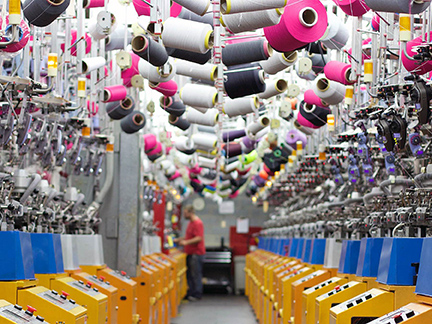 While Southern stalwart industries such as textiles and furniture manufacturing were moving to Asia and Mexico, the Japanese-based automotive industry was moving to the U.S., and economic developers in the region were ready for some high-tech and high-wage industrial prospects.
While Southern stalwart industries such as textiles and furniture manufacturing were moving to Asia and Mexico, the Japanese-based automotive industry was moving to the U.S., and economic developers in the region were ready for some high-tech and high-wage industrial prospects.
When Nissan and Toyota announced their first U.S. plants in the 1980s, it was big news. At the time the South’s traditional industries like textiles and furniture were moving their production to cheap locales, the Japanese were the first to “reshore,” “make it where you sell it,” or whatever you want to call it. They invested billions in auto plants in the Southern Auto Corridor that would sell directly to the American consumer, and we bought those vehicles like mad. . .from the Germans, too.
The migration of corporations, individuals and families to the American South
Just last year, Elon Musk and several of his companies, including Tesla, relocated their headquarters to Austin, Texas, from California. The South’s automotive sector has certainly earned a boost from California, including landing the world headquarters and assembly plant of the largest maker of electric vehicles at the time, Tesla.
In 2014, when Toyota announced it was relocating its North American headquarters and nearly 4,000 employees from Torrance, Calif., to Plano, Texas (a suburb of Dallas-Fort Worth), Jim Lentz, Toyota’s CEO at the time, said that the move was important to his employees because of the brutal cost of housing in Southern California. Lentz said that his headquarter employees could buy two houses in Texas — one to live in and one as a vacation home — for the same price as one home in California.
It should also be noted that Nissan relocated its North American headquarters from Southern California to the Nashville metro in the mid-2000s. Nissan operates its largest plant in nearby Smyrna, Tenn. Volkswagen followed Nissan by moving its HQ from Michigan to Virginia. Mercedes-Benz, with its only U.S. assembly plant located in Tuscaloosa, Ala., relocated its North American headquarters from New Jersey to an Atlanta suburb in 2015. By then, the South’s automotive industry was the world’s rock star, even though it had really earned that status many years prior.
Reshoring emerges after the Great Recession
While the U.S. was emerging from the Great Recession, something was happening overseas that was of great benefit to economic developers in the South in particular, and the automotive industry as it relates to parts suppliers in general. Business operating costs in China were skyrocketing post-recession.
By the end of the Great Recession, “Cheap China” was not so cheap anymore. Wages were rising at unprecedented levels, out-pacing wage growth in North America by more than ten-fold. Companies that sent their primary production to Asia began to question the cost of doing business there. They also questioned some other issues such as the lack of product quality, intellectual theft and rising shipping costs that could not be controlled by companies with their headquarters in North America.
By 2010, as the nation began to emerge from the Great Recession, a new economic development term was invented —
“reshoring.” This word was derived from a report from the Boston Consulting Group titled, “Made in America, Again.” The comprehensive study compared the costs of manufacturing — at the time — in the U.S. and in China, and found that depending on the industry sector, the financial operational cost advantages China enjoyed for years and held over the U.S. were eroding.
COVID has played a major part repatriating supply chains to North America or Mexico from Asia. But the first event that made U.S. execs scratch their heads and ask, “Now, why are our major production plants halfway around the world,” was the Japan earthquake and tsunami of 2011. That disaster destroyed significant parts of coastal Japan and also instigated a major nuclear accident at a power station along the coast. Because of its location, the tsunami disrupted supply chains to and from Asia for years.
Yet, while maybe not as competitive in the manufacturing arena as it once was, China’s economy remains resilient. According to China’s General Administration of Customs, shipments from the world’s second largest economy last year were up 30 percent from a year earlier to $3.36 trillion, also a record. The result was a trade surplus of $676 billion in 2021, easily beating the previous record of $535 billion set the year before, and highlighting how COVID-19 disruptions have only reinforced pre-pandemic global trade imbalances. Now, those are numbers coming from a Chinese agency. So, if you know the Chinese, you can believe some of that, all of that, or none at all.
More post-Great Recession economic trends in the South
By 2015, six years after the end of the Great Recession (at least in the South), the recovery had peaked. Project activity set new records in the region in 2015 and 2016. There were 730 economic development deals of 200 jobs or more announced in the South in calendar year 2015. The only years to challenge that incredible total of job-generating transactions in the South were 2017 (680), 2016 (695), 2014 (668) and 1997, when 636 such deals were announced.
After 2015, the South saw a slowdown of project activity, settling with a low of 497 in calendar year 2020. In fact, after 2015, project totals in the South of 200 jobs or more dropped each year from 2016 to 2020. There were many reasons for this, but at the forefront — like today — deal activity has been reduced as a result of an exhausted labor shed due to low birth rates and wide swaths of workers aging out of the workforce and retiring.
According to the Bureau of Labor Statistics, approximately 11,000 workers retired each day in the South in 2020, while only 2,200 turned working age (16) each day. In other words, the U.S. is losing more than 8,000 people from its workforce every day because of low birth rates and an aging population. It should also be noted that COVID accelerated retirements in 2020 and 2021. However, in the last few months, a trend has surfaced in that at least some of those early retirees are reentering the workforce, most of them part-time.
Today, the economy is entering its third year of COVID and is nowhere near out of the woods. Sure, more jobs were created in calendar year 2021 than any year in U.S. history. That is because so many jobs have been lost since the early spring of 2020. The economy is still re-emerging as the world deals with this virus.
However, basic economic stats, such as job creation, GDP and other measures look great one month and terrible the next. In one word, commerce is “choppy,” and as I tell anyone who asks me about the economy, my pat answer: “It is all up to the virus.” As of this writing, the virus has abated.
Emerging from COVID with automotive taking the lead
There was one industry sector that helped pull the nation and the South’s economy out of the Great Recession more than 12 years ago — the automotive industry. In 2010, automotive — foreign and domestic — began expanding, and the supplier base was doing the same. Sales were increasing as the all-too-familiar pent-up demand for new automobiles was sweeping the nation.
Deals from the auto industry in Kentucky, Alabama, Tennessee, Texas, Mississippi and South Carolina were not only noticeable, they were plain as day in 2010, the first year post Great Recession. Why? For the most part, automotive projects were just not seen from 2007 to 2010. Seeing them back in droves was reassuring in that the consumer economy had come back in the South from a deep recession in the shape of new automobile sales.
So, while COVID messes with just about every business sector across the board over the last two years, automotive does not seem to be affected, at least not in terms of project announcements. The automotive industry has been the king of big buffalo deals in the South for the better part of 40 years and during COVID, those deals have increased. In fact, the South has become THE PLACE for next-generation automotive manufacturing.
2021: The year the Southern Auto Corridor became the world’s next-generation automotive manufacturing center
The South has always been home to automotive production, even in the early days of the 20th century. Far from the domestic automotive center of the universe, which decades ago was Detroit, the South was home to plants from Ford, GM and Chrysler, scattered about the region from Atlanta to Shreveport to Louisville to Virginia and out in Texas. Some of those plants still produce.
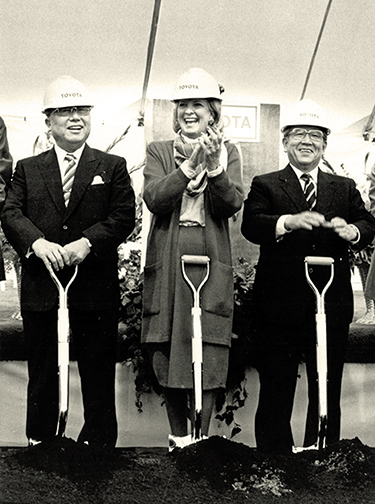 Southern Automotive Corridor 2.0 began in the mid-1980s when Nissan and Toyota announced they would build assembly plants in Smyrna, Tenn., and in Georgetown, Ky., respectively. Station wagon and Jeep models were prevalent back then, but something called the sports utility vehicle had yet to be invented. That happened when BMW and Mercedes picked South Carolina and Alabama to build the first sport utility vehicles in the U.S.
Southern Automotive Corridor 2.0 began in the mid-1980s when Nissan and Toyota announced they would build assembly plants in Smyrna, Tenn., and in Georgetown, Ky., respectively. Station wagon and Jeep models were prevalent back then, but something called the sports utility vehicle had yet to be invented. That happened when BMW and Mercedes picked South Carolina and Alabama to build the first sport utility vehicles in the U.S.
Other foreign automakers would follow the Germans (Mercedes and BMW) and the Japanese (Toyota and Nissan) by building large assembly plants in the Southern Auto Corridor, including Volkswagen, Hyundai, Kia, Honda, Mazda and Volvo. All of these plants assemble SUVs, a Southern Auto Corridor staple.
Toward the end of 2021, there’s no question that Southern Automotive Corridor 3.0 was launched in earnest, and that the production of electric vehicles and the batteries that run them are in full swing.
No less than 22 new or existing assembly plants in the South are in some phase of battery cell and/or electric vehicle planning or production.
Electrifying the Southern Automotive Corridor 3.0
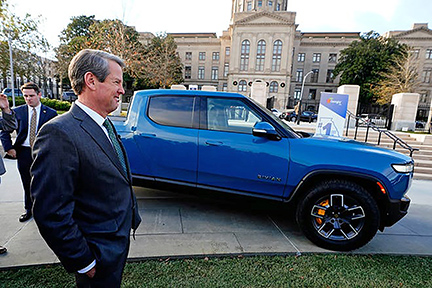 The sheer size – in acreage, square footage and initial investment — of these new EV announcements made in 2020 and 2021 by Ford, Rivian, Tesla, Toyota, Vinfast — even startups like Canoo — and older plants like Mercedes-Benz and Nissan, give one an indication that this transformation of going electric is no fad, even though no one seems to be able to put their finger on true demand. But if you look at what car makers are saying, planning and investing in, there won’t be a demand for fossil-fueled vehicles, because at some point, the automakers will stop producing them.
The sheer size – in acreage, square footage and initial investment — of these new EV announcements made in 2020 and 2021 by Ford, Rivian, Tesla, Toyota, Vinfast — even startups like Canoo — and older plants like Mercedes-Benz and Nissan, give one an indication that this transformation of going electric is no fad, even though no one seems to be able to put their finger on true demand. But if you look at what car makers are saying, planning and investing in, there won’t be a demand for fossil-fueled vehicles, because at some point, the automakers will stop producing them.
It’s the real deal according to a guy named Ford. Ford operates two incredibly profitable plants in Kentucky — has for decades — and one in Missouri, and that’s it in the South. Most of Ford’s plants are in the Midwest as they have been forever.
Now, Ford is investing nearly $12 billion (an unheard-of investment by any automaker at one time) in Kentucky and Tennessee to make this transformation from gas to electric happen. “I think the industry is on a fast road to electrification,” Ford’s executive chairman, William C. Ford Jr., said in an interview, “and those who aren’t are going to be left behind.”
Various sources say that vehicles sold globally that run solely on electricity will rise to 11 percent of total vehicles sold (from 4.8 percent now) in 2025, and 24 percent by 2030. At the same time, sources expect that global sales of non-electric vehicles — gasoline and diesel — will fall from the current 89 percent rate to 39 percent by 2030.
This electrification of vehicles is a movement that requires speed to market because most of the automakers investing in electric vehicles are all-in. The amount of money being spent by automakers just with the announced projects of 2021 surpasses the investments made by auto OEMs in any given year in the Southern Automotive Corridor by ten-fold.
It may be even larger than that, as electric-only suppliers are beginning to make announcements. We can say with confidence that in no year in Southern economic development history have there ever been larger investments made by the automotive industry. In fact, the only thing that can compare to the total investments made by the automotive EV industry over the last three years happened when multi-billion-dollar LNG export facilities were announced with regularity in Louisiana and Texas.
Ford Motor, for example, and its partner, SK Innovation, announced they would invest $11.4 billion in projects in Kentucky and Tennessee, building three battery plants and an electric-powered pickup truck assembly line. These investments are expected to create 11,000 jobs. The investments are the single largest in the domestic automaker’s 118-year history. The typical fossil-fuel-powered car plant announced over the last three decades in the South would average $1 billion in initial investment and about 2,000 jobs.
Suppliers to Southern Automotive Corridor 3.0
It should be noted that suppliers to these electric vehicle and battery facilities — almost all of which are not yet complete — are already making the scene. So far, we have seen new project announcements like battery-recycling plants and mini-steel mills that use the latest technology to produce automotive-grade steel, among others.
Additionally, and kind of the cherry on the top of this massive automotive industry expansion that seemed to reveal itself overnight, the South saw its most active year since the mid-1990s in new computer chip plant announcements. There is no question these capital expenditures are being made in large part to meet the overwhelming demand for chips used in the automotive industry.
But there are many other deals to support electric vehicle development in the South. A new U.S. Steel mini-mill was announced recently in Mississippi County, Ark., the largest steel-making county in the South and second-largest in the U.S. The mill is expected to supply the nearby Ford electric vehicle and battery plant near Memphis (Blue Oval City in Stanton, Tenn.) with the latest in automotive grade steel.
Clif Chitwood, President of Mississippi County (Ark.) Economic Development (also known as Great River Economic Development Foundation), believes one of the reasons why his county captured the new U.S. steel plant was because of Ford’s massive development across the Mississippi River in West Tennessee. “The hood, roof, etc., have long been the parts of a car that induction mills could not produce. But I understand that the metallurgical advances that both U.S. Steel and Nucor have made will soon make this possible.” Chitwood’s county is home to both U.S. Steel and Nucor.
Ironically, California-based Envirotech Vehicles announced in January it had chosen Chitwood’s Mississippi County, Ark., for a new factory to build commercial electric vehicles. The project — seemingly one of many EV or battery deals that announce in the South almost weekly — is a smaller, $80 million project that will create 800 jobs. So, this tiny county of 40,000 people across the Mississippi River from Memphis and West Tennessee, has turned two huge electric vehicle-based deals in less than a quarter of a year.
Earlier in this story, we identified the 22 plants (so far) in the Southern Automotive Corridor that are preparing assembly lines for electric vehicles and battery cells. Here are the locations we believe are best suited for suppliers to those EV and battery plants with the dates production will commence. All are located close to an assembly plant, which is identified. We hope this information helps you and your company find your location in the new age of electric vehicles and the sources that will power those vehicles.